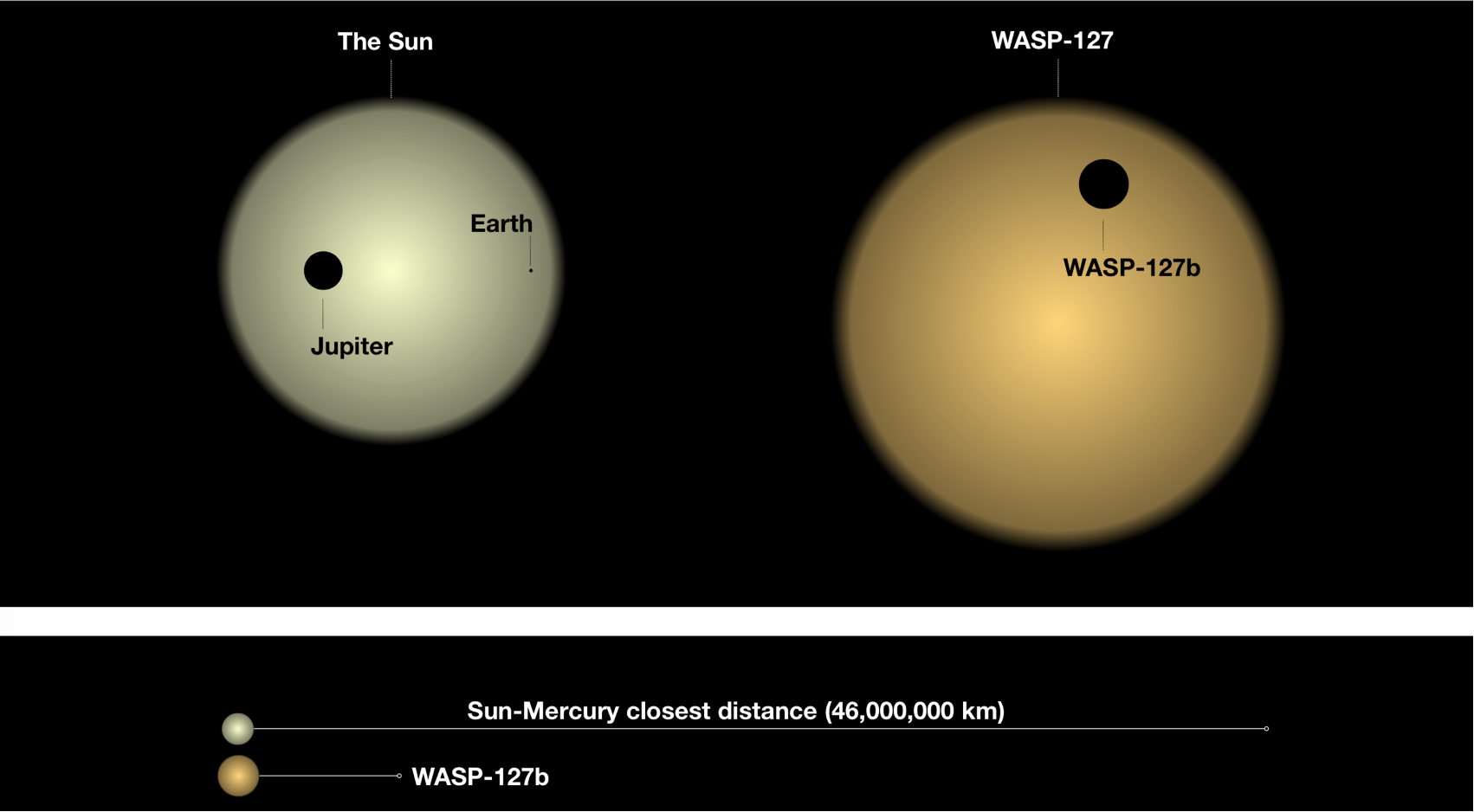
Over a decade ago, all the work being done on exoplanets was categorized under astrophysics. It was a lot of theoretical work, as Kepler had barely launched, and we didn’t have this wild stable of thousands of known exoplanets to work with. But now, because we can observe worlds in other systems, exoplanets are bridging the divide between astrophysics and planetary science. So not all planetary science involves our solar system anymore. Every day, we physically observe more and more about exoplanets.
And now, in new research presented at the Europlanet Science Conference (EPSC), we have managed to detect clouds on an exoplanet.
The planet in question is WASP-127b, which is about 525 light-years away. It’s a hot Saturn, rather than a hot Jupiter for once because it’s similar in mass to Saturn and orbits very close to its parent star. It orbits that star once every four days, and it can be up to 1,100 degrees Celsius at the surface. Like Saturn, it’s also very fluffy, with a radius 1.3 times that of Jupiter but a fifth of the mass.
The exoplanet was found using the transit method, which means we measured the change in the light from the star as the planet passed between it and us from our point of view, and that dip in the light was evidence of WASP-127b.
As our instrumentation has improved, our ability to understand the composition of a gassy exoplanet has also improved, to the point where we can detect the presence of compounds like water vapor. And that fluffiness we mentioned earlier actually makes the planet easier to observe because we can see farther into the atmosphere due to the low density. So a team of astronomers used infrared observations from the Hubble Telescope and visible light measurement from the ESPRESSO spectrograph, which is on the Very Large Telescope in Chile, to analyze different regions of the planet’s atmosphere.
Presenter and study lead Dr. Romain Allart explains the results: First, as found before in this type of planet, we detected the presence of sodium, but at a much lower altitude than we were expecting. Second, there were strong water vapor signals in the infrared but none at all at visible wavelengths. This implies that water vapor at lower levels is being screened by clouds that are opaque at visible wavelengths but transparent in the infrared.
Not only did they find clouds, but they also managed to narrow their altitude down to an atmosphere layer existing where the atmospheric pressure ranges from 0.3 to 0.5 millibars. We found clouds, everyone, and we know about where they should be. On an exoplanet. What even is this magic?
Of course, we still have questions, as Allart points out, noting: We don’t yet know the composition of the clouds, except that they are not composed of water droplets like on Earth. We are also puzzled about why the sodium is found in an unexpected place on this planet.
On top of these results, data from the ESPRESSO instrument suggests that WASP-127b orbits outside the equatorial plane and rotates in the opposite direction from the host star. Allart goes on to say: Such alignment is unexpected for a hot Saturn in an old stellar system and might be caused by an unknown companion. All these unique characteristics make WASP-127b a planet that will be very intensely studied in the future.
And we will bring you any news on this fascinating world as it is published, here on Daily Space.
More Information
ESPC press release
“WASP-127b: a misaligned planet with a partly cloudy atmosphere and tenuous sodium signature seen by ESPRESSO,” Romain Allart et al., 2021 September 13-24, European Planetary Science Congress 2021
“WASP-127b: a misaligned planet with a partly cloudy atmosphere and tenuous sodium signature seen by ESPRESSO,” R. Allart et al., 2020 December 16, Astronomy & Astrophysics




 Join the Crew!
Join the Crew!
 Escape Velocity Space News
Escape Velocity Space News
0 Comments